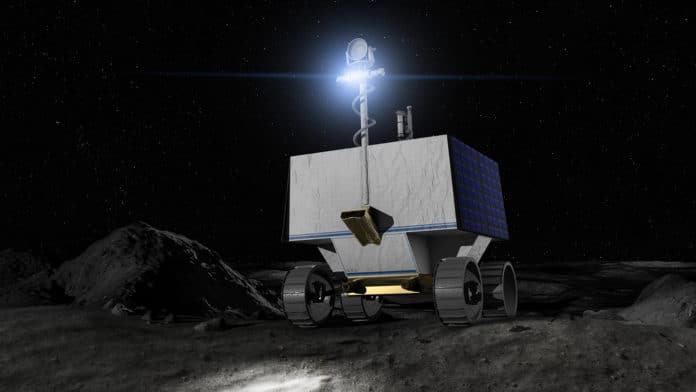An American space agency NASA finally selected Astrobotic company based in Pittsburgh, USA, with a contract value of US $199.5 million to send its Volatiles Investigating Polar Exploration Rover (VIPER) to the South Pole of the lunar surface in late 2023.
The VIPER rover will travel to points of the Moon never explored before in search of water, collecting data on the location and concentration of ice of this celestial body. Its survey will help pave the way for astronaut missions to the lunar surface beginning in 2024.
The contract is part of the Artemis program with which NASA plans to send the first woman and next man to the lunar surface in 2024 through private companies that are responsible for operating launches and space travel. The approximately 1,000-pound VIPER rover will spend about 100 days on the lunar surface, during which it will roam several miles and use its four science instruments to sample various soil environments.
The rover also will have a drill to bore approximately 3 feet into the lunar surface. Some of its three water-hunting instruments are flying to the Moon ahead of time as part of NASA’s Commercial Lunar Payload Services (CLPS) initiative.
Thanks to past missions, it is known that frozen water exists at the lunar poles. But in order to use it to develop a sustainable lunar exploration program on the Moon by 2028, more information about the area and its composition are needed. For this reason, the VIPER will enter craters that have never received sunlight, and that are some of the coldest points in our solar system where ice has endured billions of years.
“It is an enormous honor and responsibility to be chosen by NASA to deliver this mission of national importance,” said Astrobotic CEO John Thornton. “Astrobotic’s lunar logistics services were created to open a new era on the Moon. Delivering VIPER to look for water, and setting the stage for the first human crew since Apollo, embodies our mission as a company.”
The VIPER will reach the Moon thanks to the Griffin lunar lander, which is capable of delivering up to 500 kg of mass to the lunar surface.
